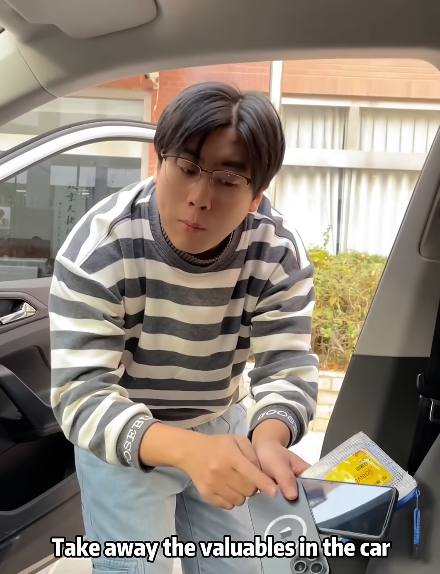
Parking your vehicle for an extended period—whether you’re going on vacation, traveling for work, or simply don’t need to use it for a while—requires more than just turning off the ignition and locking the doors. Leaving your car idle for days, weeks, or even months can lead to a variety of problems, including a dead battery, flat tires, rusted parts, and unwanted pests. To avoid returning to a vehicle that’s damaged or difficult to start, it’s essential to take a few key precautions. Here are five important things you must do before parking your car for a long time.
1. Clean the Vehicle Inside and Out
Before you leave your car parked for a long time, give it a thorough cleaning. This might sound like a cosmetic step, but it’s more important than you think.
- Exterior: Wash off any dirt, bird droppings, or tree sap, as these substances can damage the paint over time. If you’re planning to store the car for more than a few weeks, consider applying a coat of wax to help protect the finish.
- Interior: Remove all trash, food crumbs, and personal items. Old food or forgotten wrappers can attract rodents and insects. Vacuum the carpets, wipe down surfaces, and consider using a mild air freshener to keep the interior smelling fresh.
- Pro Tip: If your car is going to be stored in a damp or humid location, place a few moisture-absorbing packets (like silica gel or baking soda) inside to prevent mold and mildew buildup.

2. Take Care of the Battery
One of the most common issues with long-term vehicle storage is a dead battery. Car batteries naturally lose charge over time, and if not maintained, they can die completely.
- Disconnect the Battery: If you know you won’t be using your vehicle for more than a month, consider disconnecting the negative terminal to prevent the battery from slowly draining.
- Use a Battery Tender: A smart battery maintainer or trickle charger can be a lifesaver. It will keep your battery charged without overcharging it. This is ideal if you’re storing the vehicle in a garage or somewhere with access to an electrical outlet.
- Check Battery Terminals: Make sure the battery terminals are clean and free of corrosion before you store the car. Corroded terminals can lead to connectivity issues when you try to start the vehicle again.
3. Inflate the Tires Properly
When a car sits in the same position for too long, the tires can develop flat spots. This occurs when the weight of the vehicle presses down on one area of the tire for an extended period.
- Check the Tire Pressure: Inflate all tires, including the spare, to the recommended PSI. Some experts even recommend slightly overinflating the tires if the car will be sitting for a long time (but not exceeding the maximum pressure rating).
- Use Tire Cradles or Move the Vehicle Occasionally: If possible, use tire cradles or mats to distribute the pressure more evenly. If you have access to the vehicle during the storage period, try to move it a few feet every couple of weeks to prevent flat spotting.
- Inspect for Leaks: Before leaving your car, make sure none of the tires have slow leaks that could cause them to deflate completely while in storage.

4. Fill Up the Fuel Tank and Add Stabilizer
An empty or partially filled gas tank can be harmful to a car left in storage. Air in the tank can lead to condensation, which can cause rust inside the tank and affect engine performance later.
- Fill the Tank: Top off your gas tank to reduce the amount of air inside and limit moisture buildup.
- Add a Fuel Stabilizer: This is a must if you plan to leave the vehicle unused for more than 30 days. Fuel stabilizer helps prevent the gasoline from deteriorating and gumming up your fuel lines or injectors.
- Drive the Car After Adding Stabilizer: Once you’ve added the fuel stabilizer, drive the car for 5 to 10 minutes to allow the treated fuel to circulate through the system.
5. Protect the Vehicle from the Environment and Pests
Your car’s surroundings can significantly affect how well it weathers a long storage period. You want to shield it from weather, moisture, and unwanted visitors.
- Choose a Good Parking Spot: Whenever possible, park your vehicle in a garage or covered area. This helps protect it from rain, sun, dust, and extreme temperature fluctuations.
- Use a Car Cover: If you’re parking outside, invest in a high-quality, breathable car cover. Make sure it’s the right size and type for your vehicle. A good car cover prevents UV damage, water spots, and bird droppings from harming the paint.
- Seal Off Entry Points: Rodents and insects love nesting in inactive vehicles. To deter them:
- Close all windows and sunroofs.
- Cover the tailpipe and air intake with steel wool or specialized covers.
- Place mothballs, peppermint oil, or dryer sheets around the car (especially under the hood) to discourage rodents.
- Avoid leaving food or even scented trash inside the car.
- Use Windshield Sunshades: These help protect the dashboard and interior fabrics from sun damage and keep temperatures down.

Bonus Tip: Don’t Use the Parking Brake
Although using the parking brake is standard practice, it’s not recommended when parking for a long time. Over time, the brake pads can stick to the rotors or drums, especially in humid conditions, which can make it difficult to drive the vehicle later.
- Use Wheel Chocks Instead: Place wheel chocks (wedges) behind the tires to prevent rolling, especially if you’re parking on an incline.
Final Thoughts
Proper preparation can save you a lot of trouble down the road. By cleaning your car, maintaining the battery, inflating the tires, treating the fuel, and protecting it from pests and weather, you’ll ensure that your vehicle remains in great shape while you’re away.
Returning to a car that starts immediately and looks just as good as when you left it is well worth the small amount of effort these five steps require. Taking the time to follow these tips now will save you time, money, and stress later. Safe travels, and happy parking!



